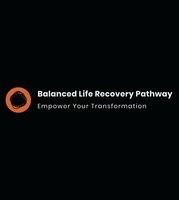The Path to Healing After Trauma
- Gary Clouse

- Oct 7
- 3 min read
Healing after trauma is a journey we all can take together. It is not a straight line, but a path filled with ups and downs, moments of strength, and times of rest. When we face trauma, especially when it intertwines with addiction, the road to recovery can feel overwhelming. Yet, with gentle steps and the right support, healing is possible. We can find balance, strength, and hope as we move forward.
Understanding trauma recovery approaches
Before we dive into the steps of healing, it’s important to understand what trauma recovery approaches are. These are methods and strategies designed to help us process painful experiences and rebuild our lives. They focus on safety, trust, empowerment, and connection. Trauma recovery approaches are not one-size-fits-all. They adapt to our unique needs and experiences.
Some common trauma recovery approaches include:
Therapy: Talking with a trained professional who listens and guides us.
Mindfulness and meditation: Learning to be present and calm in the moment.
Support groups: Sharing our stories with others who understand.
Creative expression: Using art, music, or writing to express feelings.
Physical activity: Moving our bodies to release tension and stress.
Each of these approaches helps us in different ways. Together, they create a strong foundation for healing.
The importance of community and connection
Healing does not happen in isolation. We need others to walk with us on this path. Community offers us understanding, encouragement, and hope. When we connect with people who have faced similar struggles, we feel less alone. This connection can be a powerful source of strength.
At Balanced Life Recovery Co, we believe in building a supportive community. We want to create a space where everyone feels safe to share, learn, and grow. Together, we can break the silence around trauma and addiction. Together, we can find balance and peace.
Here are some ways to build connection:
Join a support group or online forum.
Attend community events focused on healing.
Reach out to trusted friends or family members.
Volunteer to help others on their healing journey.
These small steps can open doors to meaningful relationships and healing.
What are the 7 steps to healing trauma?
Healing trauma is a process that unfolds in stages. While everyone’s journey is unique, these seven steps can guide us toward recovery:
Acknowledgment
Recognize the trauma and its impact on your life. This is the first step to taking back control.
Safety
Create a safe environment for yourself. This might mean setting boundaries or finding a peaceful space.
Expression
Find ways to express your feelings. Talk, write, or create art to release what’s inside.
Understanding
Learn about trauma and how it affects the mind and body. Knowledge empowers us.
Support
Seek help from professionals, friends, or support groups. Healing is easier with others.
Self-care
Prioritize your well-being. Eat well, rest, and engage in activities that bring joy.
Growth
Embrace new ways of living and thinking. Healing opens the door to a fuller life.
Each step builds on the last. We may revisit some steps multiple times, and that’s okay. Healing is not a race but a gentle unfolding.
Practical tips for daily healing
Healing after trauma requires patience and kindness toward ourselves. Here are some practical tips to help us on this journey every day:
Start small: Set achievable goals like a short walk or a few minutes of deep breathing.
Create routines: Consistency brings comfort and stability.
Limit triggers: Identify what causes distress and find ways to reduce exposure.
Practice mindfulness: Focus on the present moment to calm anxiety.
Celebrate progress: Acknowledge even the smallest victories.
Ask for help: Reach out when you need support or guidance.
Remember, healing is a process of many small steps. Each one matters.
Embracing a spiritual path to healing
For many, spirituality offers a deep source of comfort and strength. It can help us find meaning in our experiences and connect to something greater than ourselves. This connection can be a powerful part of trauma recovery approaches.
Spirituality does not have to be tied to religion. It can be as simple as spending time in nature, practicing gratitude, or meditating. It invites us to trust in the possibility of renewal and hope.
At Balanced Life Recovery Co, we encourage exploring spiritual paths that resonate with you. This can help us build resilience and find peace amid challenges.
Healing from trauma and addiction is a journey we do not have to walk alone. By embracing trauma recovery approaches, building community, and nurturing ourselves with kindness and patience, we can find a path to balance and strength. If you want to learn more about trauma and healing, take the first step today. Together, we can create a brighter future.





Comments